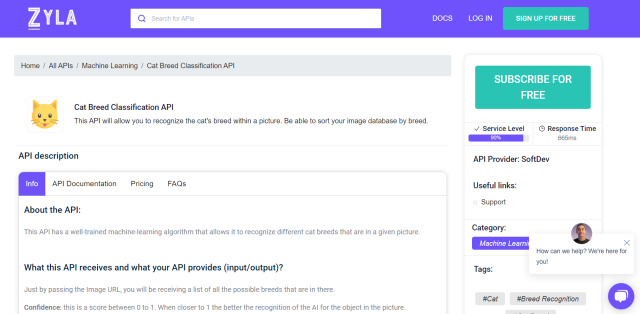3 Real Life Use Cases Of Cat Breed Recognition APIs
In this article, you will find three real life use cases of cat breed recognition APIs. If you are interested in learning more about them, keep reading!
For thousands of years, cats have coexisted with humans as tamed animals. It still exhibits its own instincts and habits, nonetheless, as a wild animal. This can make it challenging to comprehend, especially for people who are unfamiliar with cats.
Knowing what breed of cat you have is one of the most frequent issues. It can occasionally be challenging to identify the breed of your cat, particularly if it is a mixed breed. This may be caused by the fact that there are numerous cat breeds,
Let’s Talk About Cats
Cats are one of the most popular pets in the world. They are independent and can entertain themselves for hours with little to no interaction from us. They are also very clean animals, and their litter box is much easier to maintain than a dog’s. Cats are also very quiet and gentle animals. They don’t bark or chew on things like dogs do, and they usually only meow if they want something.
Real Life Use Cases Of Cat Breed Recognition APIs
There are many reasons why someone would want to know what breed their cat is:
- If you have a cat shelter, you may want to know what breeds your cats are so you can better market them to potential adopters.
- If you have multiple cats, you may want to know what breeds they are so you can better understand their behavior.
- If you have a cat yourself, you may want to know what breeds they are so you can learn more about them and their history.
There are many ways that a cat breed recognition API can benefit your life. But in this article, we will focus on three specific use cases that we think will be the most useful for you.
Identifying your cat’s breed
This can be very important because it can help you better understand your cat’s behavior and temperament. It can also help you find other cats that share similar traits with yours.
Know Your Cat’s Personality
Another important use case of a cat breed recognition API is knowing your cat’s personality. Every cat is different and has their own unique traits and characteristics. By knowing what breed your cat is, you can learn more about their behavior and temperament.
Know More About Your Cat’s History
Finally, by knowing what breed your cat is, you can also learn more about their history and how they came to be part of your family.
So, if you are interested in learning more about the three real life use cases of Cat Breed Recognition APIs, we recommend that you try using Cat Breed Classification API. This tool is easy to use and it will help you identify your cats’ breeds quickly and easily. In addition, it also provides more information about each breed so that you can learn more about them!
In order to learn more about Cat Breed Classification API and its benefits, all you need to do is visit the website or keep reading!
About Cat Breed Classification API
You may get a list of all the potential breeds present just by passing the Image URL. Cat Breed Classification API confidence score between 0 and 1 will be displayed. The more closely a value approaches 1, the better the AI is able to identify the object in the image. A label with the name of the thing the AI has identified on the image will also be sent to you. Siamese cats or Persian cats, as examples.
Additionally, Cat Breed Classification API aims to accurately classify the identified objects. Siamese cats and Persian cats are not the same thing as cats. With the help of this API, you may find an exact match. This API analyzes cat images using its sophisticated artificial intelligence algorithms; it then returns information about the breeds it recognizes in the image.
How to use it
To make use of it, you must first:
1- Go to Cat Breed Classification API and simply click on the button “Subscribe for free” to start using the API.
2- After signing up in Zyla API Hub, you’ll be given your personal API key. Using this one-of-a-kind combination of numbers and letters, you’ll be able to use, connect, and manage APIs!
3- Employ the different API endpoints depending on what you are looking for.
4- Once you meet your needed endpoint, make the API call by pressing the button “run” and see the results on your screen.



